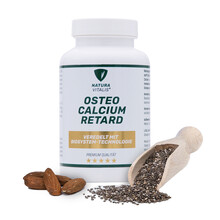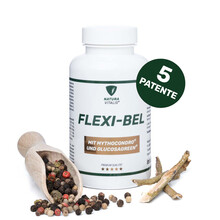Bei Natura Vitalis® stehen Sie - als Kunde - im Vordergrund und deshalb ist es für uns wichtig, dass Sie ebenfalls in Sachen Versandkosten bestens informiert sind. Nachstehend möchten wir Ihnen in kurzer und anschaulicher Form die möglichen Versandarten und die damit verbundenen Kosten näher bringen.
Die oberste Priorität beim Versand hat für uns die Schnelligkeit bei der Zustellung und die Sicherheit Ihrer Ware. Deshalb versenden wir z.B. innerhalb Deutschland ausschließlich versicherte Pakete. Unsere Versandkosten-pauschale von 5,95 Euro beinhaltet nicht nur den Versand Ihrer Ware, sondern ebenfalls die Verpackung.
Im Falle einer Retoure zahlen Sie keinen Cent. Hierfür übernehmen wir komplett die Kosten, wenn Sie unseren vorgefertigten Rückversandaufkleber nutzen.
Versandkosten Inland:
Wir liefern deutschlandweit versichert und per DHL in 1-3 Werktagen im deutschen Festland.
Hierfür betragen die Versandkosten pauschal 5,95 Euro.
Versandkosten Ausland:
Österreich
Versicherter Versand zu 9,95 Euro
Europa 1 (Europäische Länder, außer Schweiz, Norwegen, Liechtenstein und Vatikan)
Versicherter Versand zu 13,95 Euro
Europa 2 (Nur die Länder Schweiz, Norwegen, Liechtenstein und Vatikan)
Versicherter Versand zu 16,95 Euro
Welt (Alle nicht europäischen Länder)
Versicherter Versand zu 39,95 Euro
Bei Lieferungen außerhalb Europas fallen zusätzliche Zölle, Steuern und Gebühren an.
Weitere Informationen zu Zöllen finden Sie beispielsweise unter:
http://ec.europa.eu/taxation_customs/customs/index_de.html
Und zur Einfuhrumsatzsteuer unter:
http://auskunft.ezt-online.de/ezto/Welcome.do
Sowie speziell für die Schweiz unter:
http://xtares.admin.ch
Falls Sie noch weitere Fragen zum Versand haben, zögern Sie bitte nicht uns zu kontaktieren.
Sie erreichen uns unter:
0800 - 6 82 22 22 (Gebührenfrei aus allen deutschen Netzen), oder schicken Sie uns eine Email an: info@naturavitalis.de















